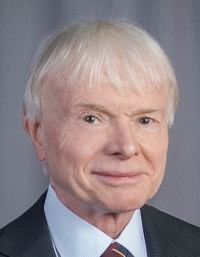Nationality American | Role Professor Name Thomas Hughes | |
 | ||
Institutions The University of Texas at Austin Known for Computational mechanicsFinite element method Residence Austin, Texas, United States Books The Finite Element Method: Linear Static and Dynamic Finite Element Analysis Notable awards | ||
Thomas j r hughes isogeometric analysis where we are and wccm xi eccm v ecfd vi 2014
Thomas Joseph Robert Hughes (born 1943) is a Professor of Aerospace Engineering and Engineering Mechanics and currently holds the Computational and Applied Mathematics Chair III in the Institute for Computational Engineering and Sciences at The University of Texas at Austin. Hughes has been listed as an ISI Highly Cited Author in Engineering by the ISI Web of Knowledge, Thomson Scientific Company.
Contents
- Thomas j r hughes isogeometric analysis where we are and wccm xi eccm v ecfd vi 2014
- Eu regional school 2016 part 2 with prof dr thomas j r hughes
- Career
- Books
- Awards and honors
- Videos
- References
A leading expert in computational mechanics, Hughes has received numerous academic distinctions and awards for his work. He is a research fellow of the National Academy of Sciences, National Academy of Engineering, American Academy of Arts & Sciences, the American Academy of Mechanics, the American Society of Mechanical Engineers (ASME), the U.S. Association for Computational Mechanics (USACM), the International Association for Computational Mechanics (IACM), the American Association for the Advancement of Science, and has been elected as a foreign member of The Royal Society. He is a founder and past President of USACM and IACM, and past Chairman of the Applied Mechanics Division of ASME.
Eu regional school 2016 part 2 with prof dr thomas j r hughes
Career
Hughes began his career as a mechanical design engineer at Grumman Aerospace, subsequently joining General Dynamics as a research and development engineer. After receiving his Ph.D. from University of California, Berkeley, he joined the Berkeley faculty, eventually moving to California Institute of Technology. He then moved to Stanford University before joining The University of Texas at Austin. At Stanford, he served as Chairman of the Division of Applied Mechanics, Chairman of the Department of Mechanical Engineering, and Chairman of the Division of Mechanics and Computation, and occupied the Mary and Gordon Crary Chair of Engineering. While at Stanford he served as a member of International Advisory Committee, ICTACEM (2001).
Hughes has developed computational methods for understanding solid, structural and fluid mechanics. He recently has applied this expertise to develop customized models of blood flow for patients using their individual imaging records such as CT scans and MRIs.
